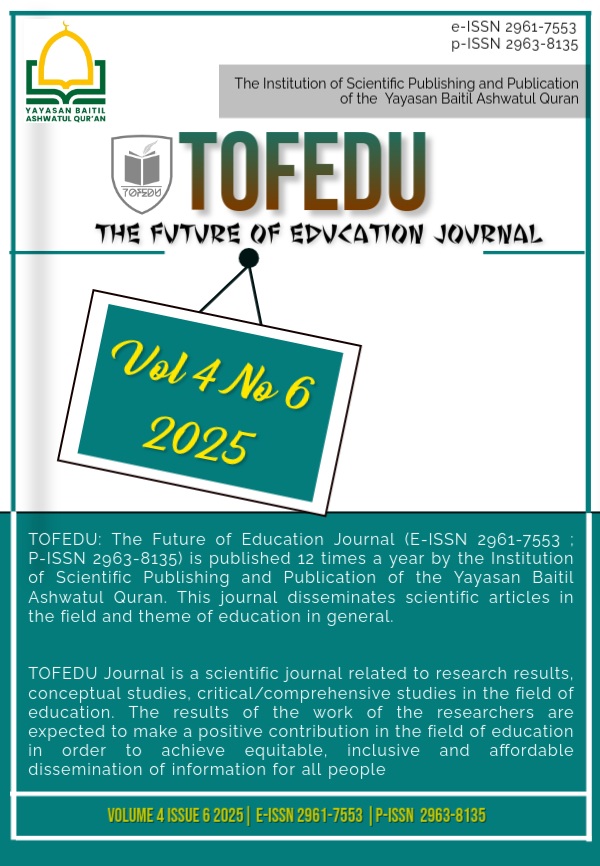The Whole Brain Teaching for Students’ Vocabulary Mastery Classroom Action Research at Junior High School
Main Article Content
Abstract
Mastering vocabulary is a fundamental step in learning a foreign language. This study investigates the Whole Brain Teaching (WBT) is teaching method in improving vocabulary mastery among eighth-grade students at SMPI Tanfirul Ghoyyi. The research problem addressed is: How does the Whole Brain Teaching method improve students' vocabulary mastery at the junior high school level? The objective of this study is to explore how the application of WBT can enhance students’ vocabulary acquisition. This research employed a Classroom Action Research (CAR) design conducted in two cycles. The data were collected through vocabulary tests and observation checklists. The findings reveal a significant improvement in students' performance, where the percentage of students who met the minimum score criteria increased from 41.17% in Cycle I to 82.35% in Cycle II. Based on the results, it can be concluded that the Whole Brain Teaching method effectively improves vocabulary mastery. The key teaching steps applied included Class-Yes, Five Classroom Rules, Teach-Okay, Scoreboard, Hands and Eyes, Switch, and Mirror. This study suggests that WBT can be a practical and engaging strategy to enhance vocabulary learning at the junior high school level, and it is recommended for future researchers to adopt or adapt this method as a reference in similar contexts.
Article Details

This work is licensed under a Creative Commons Attribution 4.0 International License.
